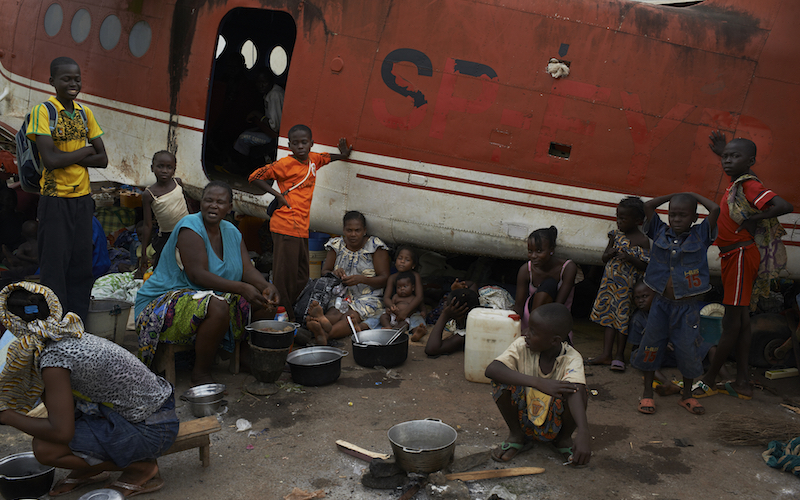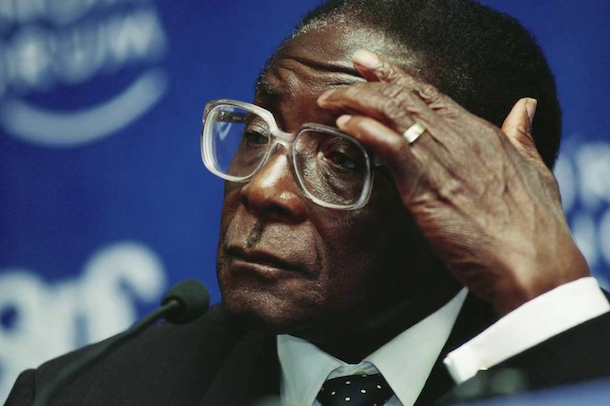
Will the World See an African Spring in 2017?
Throughout history, Africa, especially the sub-Saharan region, has been known as the continent of diseases and conflict. In recent decades, independence has been gained and long lasting civil wars ended. However, even today Africa remains a continent in conflict.
In 2016, many sub-Saharan countries experienced both violent and non-violent protests. From economic protests, such as marches over salary demands in Gabon, Ivory Coast and Ghana, to student riots in South Africa and Zambia to political protests in Kenya and Zimbabwe as well as Ethiopia. And the list goes on…
Six years ago, in early 2011, the world witnessed a period of political protests that resulted in overthrowing several regimes. What had started in Tunisia moved like a wave across multiple Arab countries. During this so called Arab Spring, citizens united and rose to voice their dissatisfaction with their governments and bring about change.
Many sub-Saharan countries have been under authoritarian rule by the same head of State for years and have, in one form or another, experienced the disregard and disabling of democratic processes to keep politicians in power. Although some of the countries have opposition parties, they often do not have enough power to effect change, are systematically hindered or election results are not honored by the ruling party.
Many of the political protests stem from dissatisfaction and anger with the current political situation and, when democratic processes are restricted, are the only way for the population to voice their grievances and to try to make a difference. With the increase in protests throughout the African continent in recent years, will the world now see an African Spring?
Mass Mobilization
In times of globalization, it has become increasingly easy to compare living conditions with other countries and uncover infringements within a political system. Therefore, the growing middle class in African countries sees the deficiencies of their governments and starts to speak up about it. According to the Pan-African research network, Afrobarometer, merely 40% of the population in 36 African countries believe that the last election in their country was free and fair. Increasingly this group of people is therefore looking for alternative ways to make themselves heard and are using social media to mobilize large groups and organize protests, as also seen during the Arab Spring.
Since late 2015, South Africans have organized protests through social media under the hashtag #Zumamustfall to force President Jacob Zuma to step down after spending several million US-Dollars on renovations of his private home, being in the orbit of several corruption scandals plus the country’s economy taking a turn for the worse when he reshuffled the position of finance minister twice within one week. Protests all around the country followed. Although a lot of the momentum of the movement subsided during 2016, there are still numerous calls for the President to resign.

Further Northeast on the continent, #TakeBackKenya is a movement geared towards denouncing corruption and bad governance within the Kenyan government. In December 2016, the police were criticized on social media for dispersing a protest organized by the movement with teargas.
This was not the first time security forces were criticized for their behavior during a demonstration. Throughout the year Kenya experienced heavy protests ahead of the 2017 Presidential elections which resulted in violent clashes between demonstrators and security forces. The protests were sparked in April 2016 by a dispute over the staffing of the Independent Electoral and Boundaries Commission (IEBC) and were reignited with the amendment of an electoral law in December.
Compared to other countries on the continent, Kenya and South Africa are well established democracies with respective constitutions and protests are, more often than not, approved and respected by the government. However, the movements seem to fail at gathering a critical mass to make an impact. Despite the corruption and problems within government, most of the population still believes in effecting democratic changes through their protests rather than rebellion. Further, the population of the countries are deeply divided into ethnical groups that will often not stand for the same cause despite having the same grievances.
Racial tensions are still high in South Africa. Notwithstanding being unhappy with President Zuma, the black majority of the population supports Zuma’s African National Congress (ANC) as the party largely responsible for liberating them from Apartheid in the early 1990s. Whilst there are over 50 tribes in Kenya, the six largest dominate the government sector and politics. Conflict between ethnic groups has intensified since the introduction of a multiparty system in the early 1990s and peaked during the violent protests that followed the December 2007 elections, resulting in multiple deaths. Due to these divisions, the protests lack the vigor to transform the country as seen during the Arab Spring.
Response of security forces
In Ethiopia, on the other hand, tribal tensions were the reason for the 2016 protests. Since 2015, the biggest ethnic group, the Oromos, protested against the government due to marginalization and persecution of their group through the expansion of Addis Ababa territory onto their villages. For the first time in history, the Oromos and the Amharas protested against the regime dominated by the minority group Tigrayan and demanded more rights. In October 2016, the government’s security forces killed a majority of protesters in the town of Bishoftu and declared a State of Emergency enabling President Mulatu Teschome to rule with special powers and infringe on the population’s right to protest. Despite international calls from human rights organizations to allow peaceful demonstrations, the State of Emergency persists. Out of fear of violence from security forces, protests have subsided.
A similar development could be observed in Gambia: Although some Gambians took to the streets after President Yahya Jammeh refused to accept his defeat in the December 2016 elections, they were quickly discouraged by the President’s statement that he will not tolerate protests.
Looking at his track record of human right violations during his 22-year tenure in office and the army chief’s vow to support Jammeh in his effort to stay in power, many Gambians were discouraged from voicing their opinion in protest. Out of fear, they are now voting with their feet by fleeing the country.
Unlike the Arab Spring, against the backdrop of not achieving critical mass, the vigorous violent response by government and its security forces discourages the population from continuing the protests. Most of the sub-Saharan African countries have experienced armed conflicts, coups or civil wars on their territory in the recent past. Having experienced brute force not too long ago, people are reluctant to incite or endure violence and rather suspend their efforts or leave the country.
Economic situation
This was not the case in the Democratic Republic of Congo (DRC) where protests and violence erupted in January 2015 after parliament passed a bill that allowed President Joseph Kabila to extend his mandate beyond December 2016, when it was due to expire. Despite the Second Congo War only ending in 2003, which was the deadliest conflict worldwide since the end of World War II, the DRC’s 2015 protest wave carried over to the end of 2016. However, this political clash originated from the opposition and government rather than being an initiative by the population.
Politics in the DRC are largely dominated by the country’s elite and not regarded as a voice for the people. Therefore, the trust in and support of politicians is low amongst the general public. As the country is lacking a middle class and the majority of the population is not in the economic position to sustain long term protests, the country’s dilemma is discussed by the elite rather than decided on the streets. After the protests flared up throughout 2016 and international mediation had failed, a political accord for 2017 elections was signed by the government and opposition on 31st December. However, protests are likely to continue until the elections.
Amidst the worst economic and political situation in Zimbabwe since 2009, Zimbabweans took to the streets in 2016 and effectively shut down the country for two days in July, organized under the banner #ThisFlag. Under a different social movement named #Tajamuka, the organizers vowed to organize major protests and disrupt the country in 2017 and force President Robert Mugabe to resign. Mugabe is one of the longest serving Presidents on the continent and, due to his age and ailments, by many he is no longer seen as fit to run the country. Although the movements exist and have the support of a large group of the population, most people are not in the economic position to protest for days. The majority of employed adults are government employees, are already experiencing difficulties in getting paid and are fearing repercussions should they protest. Due to the lack of money in the country, people spend their days queuing at banks for the little cash that is available since the withdrawal limit has been set to $50 per day. With the current inflation, that amount does not last very long so the queuing becomes a near daily task leaving little room for much else.
The Arab Spring took the respective States by surprise which was in the protesters’ favor. Since then, regimes, especially in authoritarian countries, have prepared to suppress unwelcomed uprisings by the population as soon as possible to secure their power. Whilst we have seen an increase in protest action across sub-Saharan countries in the last few years, they have not reached boiling point yet and are unlikely to get there in the short term. However, some countries, like Zimbabwe for example, might be on the verge of their turning point and reach it in 2017. If the economic situation worsens, the population will see no other way out and the internal power struggles within the ruling party may weaken the government’s ability to control the situation.
Sub-Saharan countries are slowly starting to experience a paradigm shift in which the population is starting to emancipate themselves and take the power they are entitled to. As democratic ways are crippled, they will look for alternatives which may result in protests and uprisings.
However, in most of the countries the current situation makes it unlikely that major protest waves will erupt and dethrone the regimes. The political situation will change in individual countries. However, it is improbable that it will have a spillover effect onto neighboring countries or the whole region and result in an African Spring in 2017.

